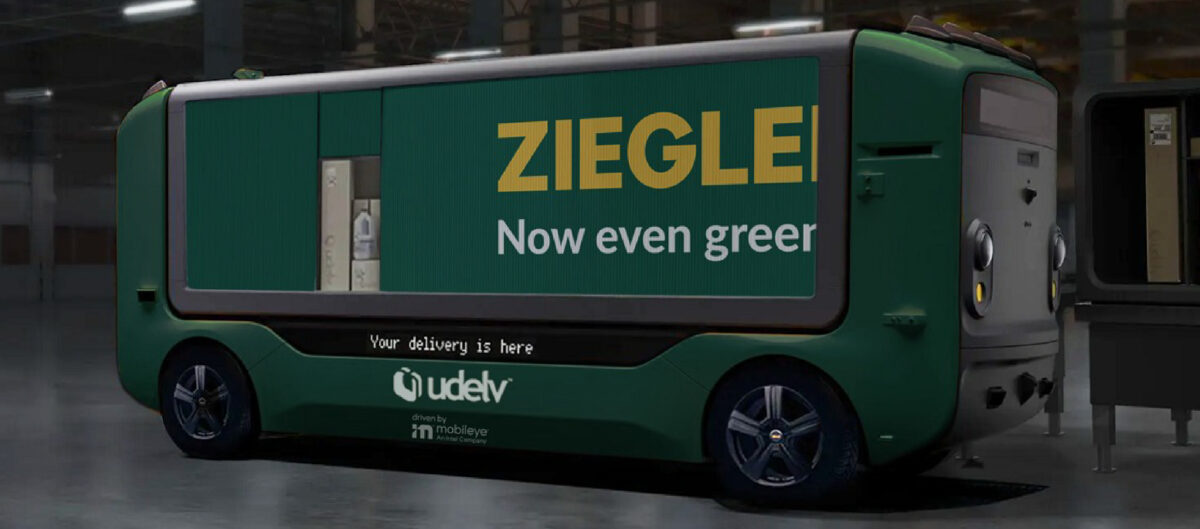
As Ziegler Group begins introducing autonomous delivery vehicles (AVs) to Europe, there is much to understand about how these vehicles work and their potential to create positive changes for emissions, city congestion, and much more.
With several autonomous Transporter vehicles from Udelv set to arrive in late 2022, Ziegler Group is preparing to test them for eventual use in city centres throughout Europe.
As exciting as this sounds, safety must be a top priority. AVs will require rigorous testing and regulatory changes before sharing the road with regular traffic. And the general public needs to be convinced of their safety as well.
We can explore how AVs work to understand them better since they will play an increasingly integral part in our daily lives in the future. What technologies enable them to safely enter traffic and navigate a specific set of coordinates safely?
Let’s find out how the Transporters work!
Although many different AV technologies are being developed worldwide, not all rely on the same methods. Most self-driving vehicle manufacturers aren’t focused on developing vehicles intended to make deliveries, which have different considerations that need to be factored in.
The Transporter was developed by Udelv, who makes self-driving delivery vehicles, and MobileEye, an Intel company. Udelv vehicles already have made more than 20,000 deliveries during testing in the USA, and MobilEye technology is currently used in more than 100 million cars worldwide to make driving safer.
The new Transporter, set to hit the market in 2022, is the result of their combined expertise, testing, and experience with initial prototypes. It’s a level 4 autonomous electric vehicle that can make all sorts of deliveries safely and securely. According to Udelv, the Transporter is the first end-to-end solution to autonomous last- and middle-mile delivery.
“From pharmaceutical pills, to groceries, to a 93-inch muffler,” According to Daniel Laury, CEO and Co-Founder of Udelv. “Eventually, this will lead to lower consumer prices, more efficient deliveries, and decongested roads.”
There is a massive difference between the requirements of regular self-driving cars and autonomous delivery vehicles, which need to be able to make deliveries easily and securely and drive autonomously.
The Transporter has no seats, steering wheel or pedals. By removing the cab, the vehicle can maximise space for making deliveries.
The Transporter uses the Mobileye Drive™ to drive without anyone piloting it. The system scans its surroundings and references past driving data while automatically opting for the most efficient routes depending on the conditions.
The Mobileye Drive™ self-driving system is made up of the following components:
● Cameras
● LiDARs
● Radars
● EyeQ® (5th Generation)
● Road Experience Management
The redundant suite of sensors – cameras, LiDAR and Radar – allow the vehicle to understand its environment and respond to real-time traffic and road conditions and is powered by EyeQ® from Mobileye.
The vehicle’s software continually updates the vehicle with the most recent and high-definition map coverage to ensure safe trips.
“The Transporter is designed to automate a multi-step delivery journey,” Says Daniel Laury. “Up to 80 stops per run!”
The uPod is the part of the vehicle that handles cargo and deliveries. It can carry up to 2000lbs of cargo. The interior of the uPod has adjustable interior shelves that easily resize to make room for goods of all shapes and sizes.
Deliveries are made by a unique opening mechanism that only allows access to the appropriate package, preventing other people from claiming your cargo.
The uPod is also linked to a cloud-based intelligence software responsible for loading, unloading, and cargo return.
Recipients will be able to use an app to claim their cargo. Udelv has created both B2B and B2C mobile applications for retailers and consumers to retrieve/load the items.
There will be certain situations that arise that require human help, and when that happens, remote operators are always ready to take over control of the vehicle. Unlike drivers, however, a single operator can monitor multiple vehicles simultaneously.
The vehicle is electric and is offered with battery packs ranging from 90 to 160 kilowatt-hours.
The Transporter is truly an impressive feat of technology, and it gives us a glimpse of what to expect in the years to come. Ziegler Group is excited to test the Transporter on private property in the near future!
If you’re looking to know more about autonomous vehicles and how you can leverage this technology for your own needs, contact us!